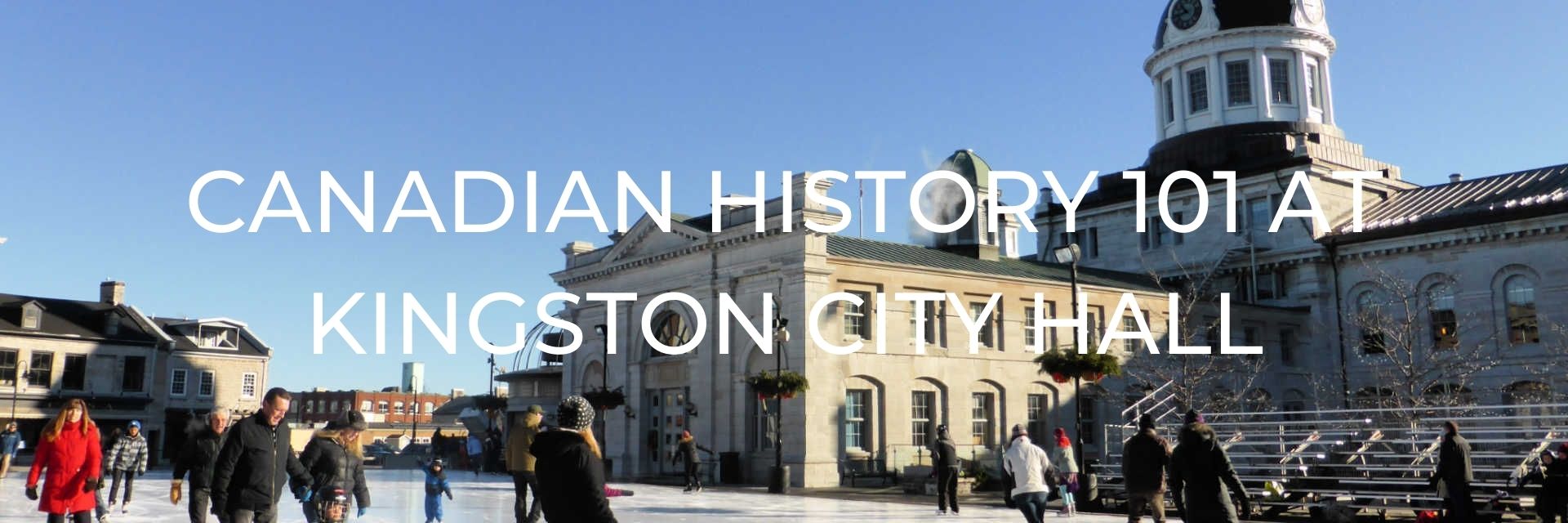
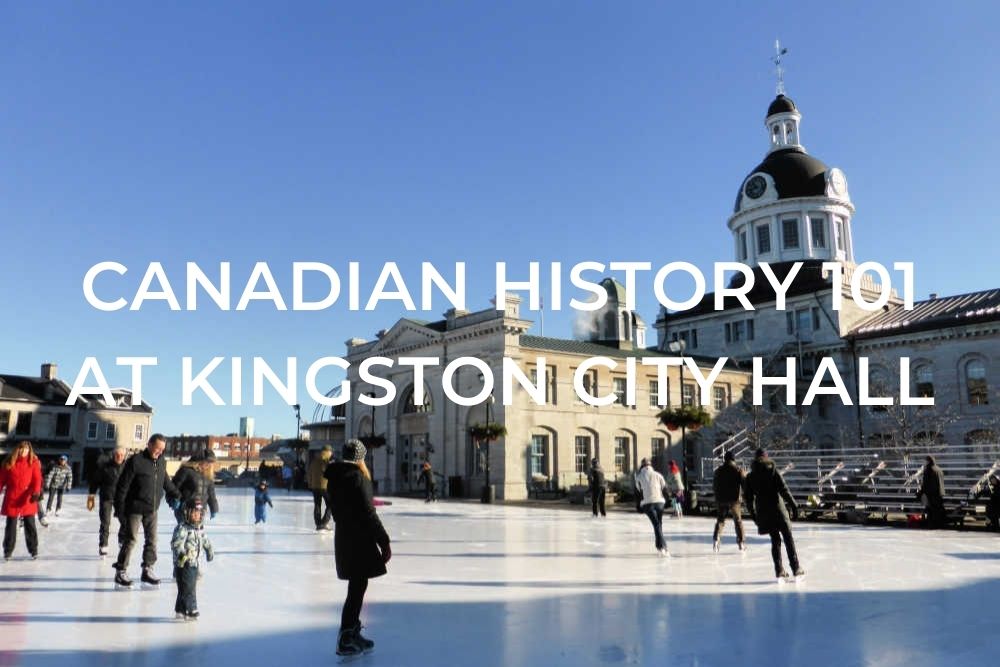
Kingston City Hall is one of the finest 19th-century buildings in Canada and is designated as a National Historic Site. It remains the centre for administering and governing the City of Kingston since 1844 and it was here that we found ourselves for a self-guided tour bright and early one frigid, freezing, darn cold morning in December. I’m not doing well to dispel the myth that Canada is just one big icebox am I here? It was pretty cold this particular morning but as I was often heard saying on this trip … “well, it could be worse.”
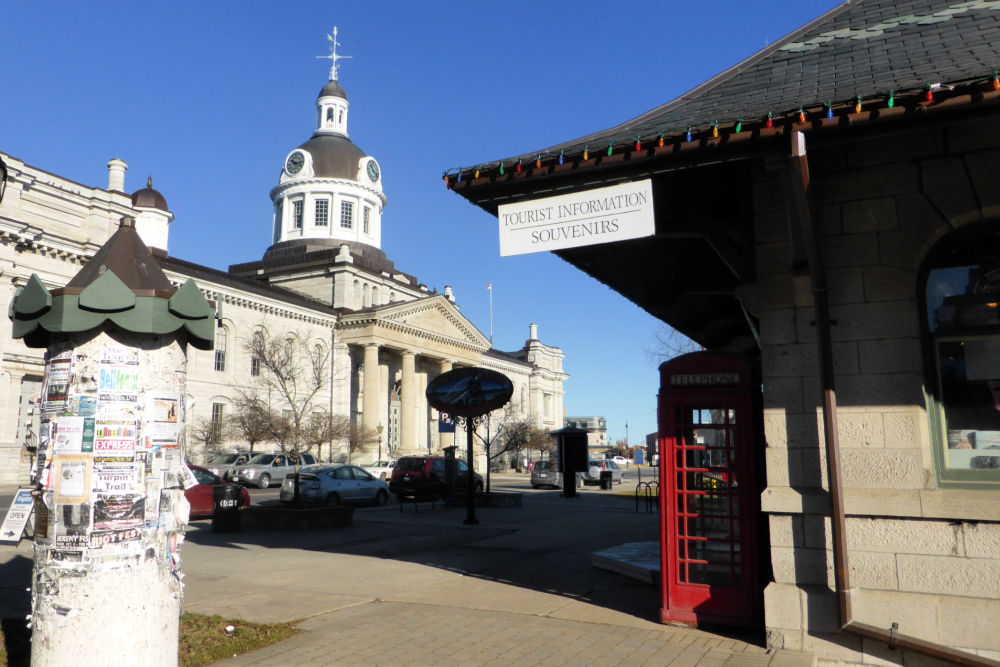
Kingston’s City Hall, and the City of Kingston itself, have played several key parts in the history of Canada. In addition to being the hometown of Canada’s first Prime Minister, Sir John A. Macdonald, Kingston also played an important part in the creation of Canada’s first official national flag. Who knew? I sure didn’t. Goodness, I am a bad Canadian eh?
Before the familiar red and white flag bearing a maple leaf was created the Canadian Red Ensign was used. This flag features the Union Jack and the shield of the royal arms of Canada, and although widely used it was never actually officially adopted as the country’s flag.
Beginning as early as 1925 the Canadian government had begun looking at possible designs for a national symbol that would represent the new country. Finally, many years later, in 1964, Dr. George Stanley, Dean of Arts of Kingston’s Royal Military College suggested a red and white flag based on the college’s own flag. To make it Canada’s flag he then suggested replacing the college’s central emblem with a single red maple leaf, as both the colours and the leaf had long been official Canadian symbols. On February 15th, 1965 at a ceremony on Parliament Hill, the new national flag was raised for the first time… and just in time for the 1967 centennial celebration of Confederation.
READ MORE: Touring Parliament Hill: The Peace Tower and Memorial Chamber and The Senate and House of Commons
TOURING KINGSTON CITY HALL
Kingston’s City Hall includes several rooms that offer insights into Canadian history such as:
- Gallery of Kingston’s former Mayors: Dating from the 1840s to present and found up both sides of the stairs leading to the second floor as well as throughout the building.
- The ‘Gaol’ (Jail): The home of Kingston’s original police headquarters that opened in 1844 and ran through 1906. It included working spaces for the constables, as well as several cramped and dark basement cells that held men, women, and children that had been arrested for various crimes. Currently, these spaces are being restored to become an exhibit of the experiences of the people of Kingston, their social hardships, and the criminal justice system.
Other rooms to explore include:
MEMORIAL HALL OF WINDOWS
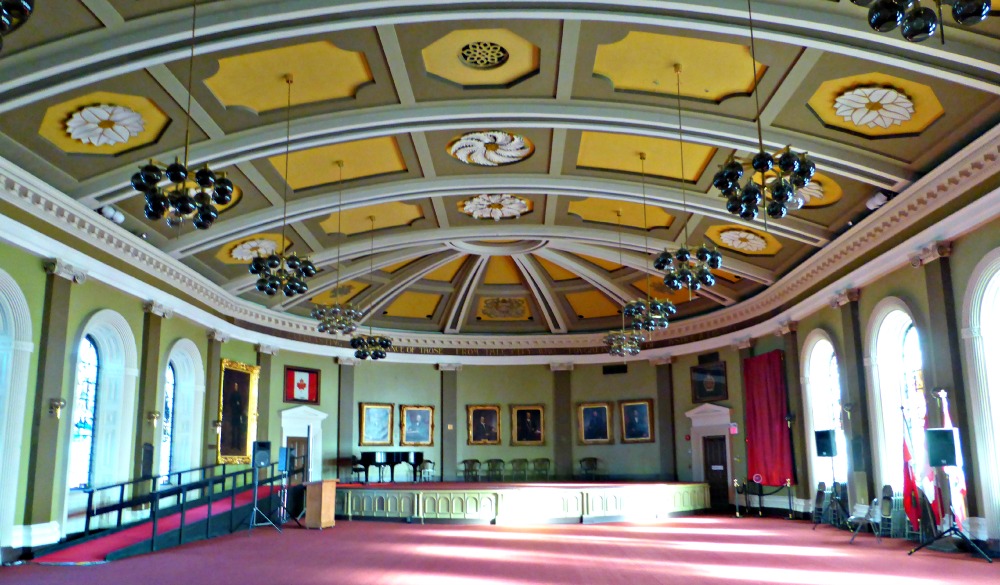
This was my favourite room that includes 12 stained glass windows that pay tribute to Canadians who fought in WWI battle-the names of which I recognised as either places we visited on our trip to Normandy and Ypres, or the names of places we intended to visit on our return trip to WWI sites of France and Belgium.
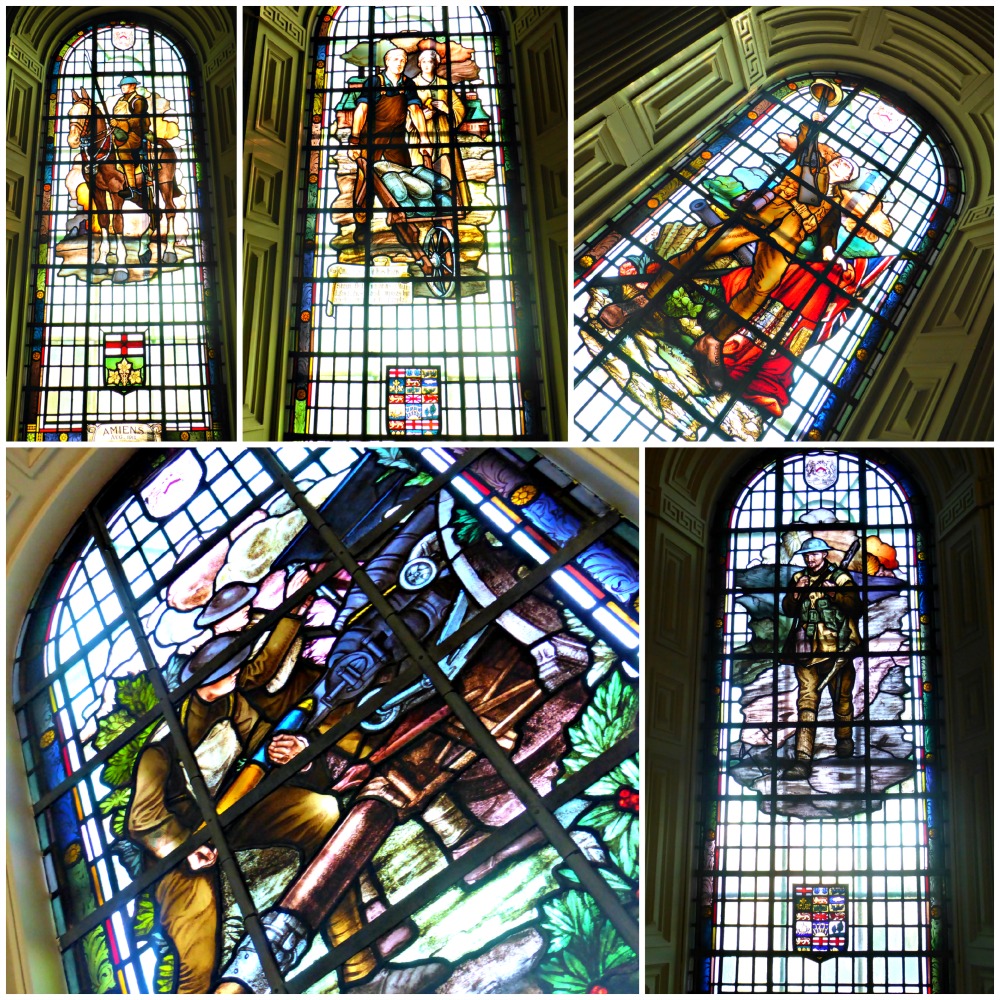
The windows were dedicated in honour of Kingston’s Sailors, Soldiers, Airmen, and Nursing Sisters who served overseas in the Great War in 1921. This room also features a beautiful and elaborate plaster ceiling (always look up!) and bronze plaques and a Memorial book that lists the names of those who died during WWI and WWII.
ONTARIO HALL
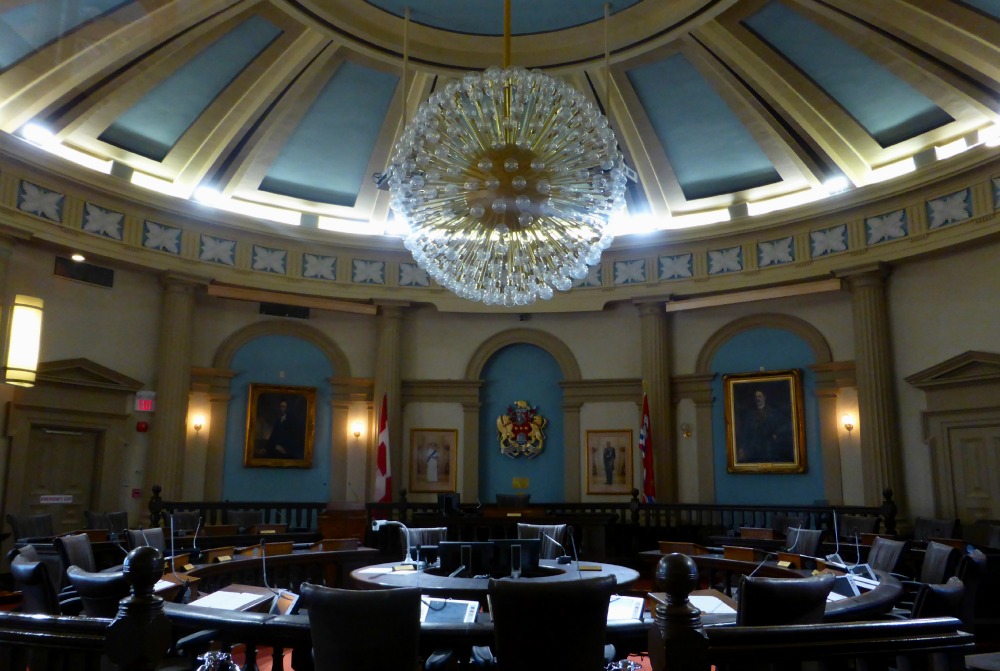
Over the years this has served as the Merchant’s Exchange, the Customs Office, a place of worship, a saloon, and office space. From 1883 to 1894 it was also the home to the first women’s medical college in Canada.
Ontario Hall also features the Mayor’s chair, the city’s Coat of Arm, and a plaster ceiling from which hangs an impressive Sunburst Chandelier with 373 light bulbs.
FUN FACTS ABOUT KINGSTON CITY HALL
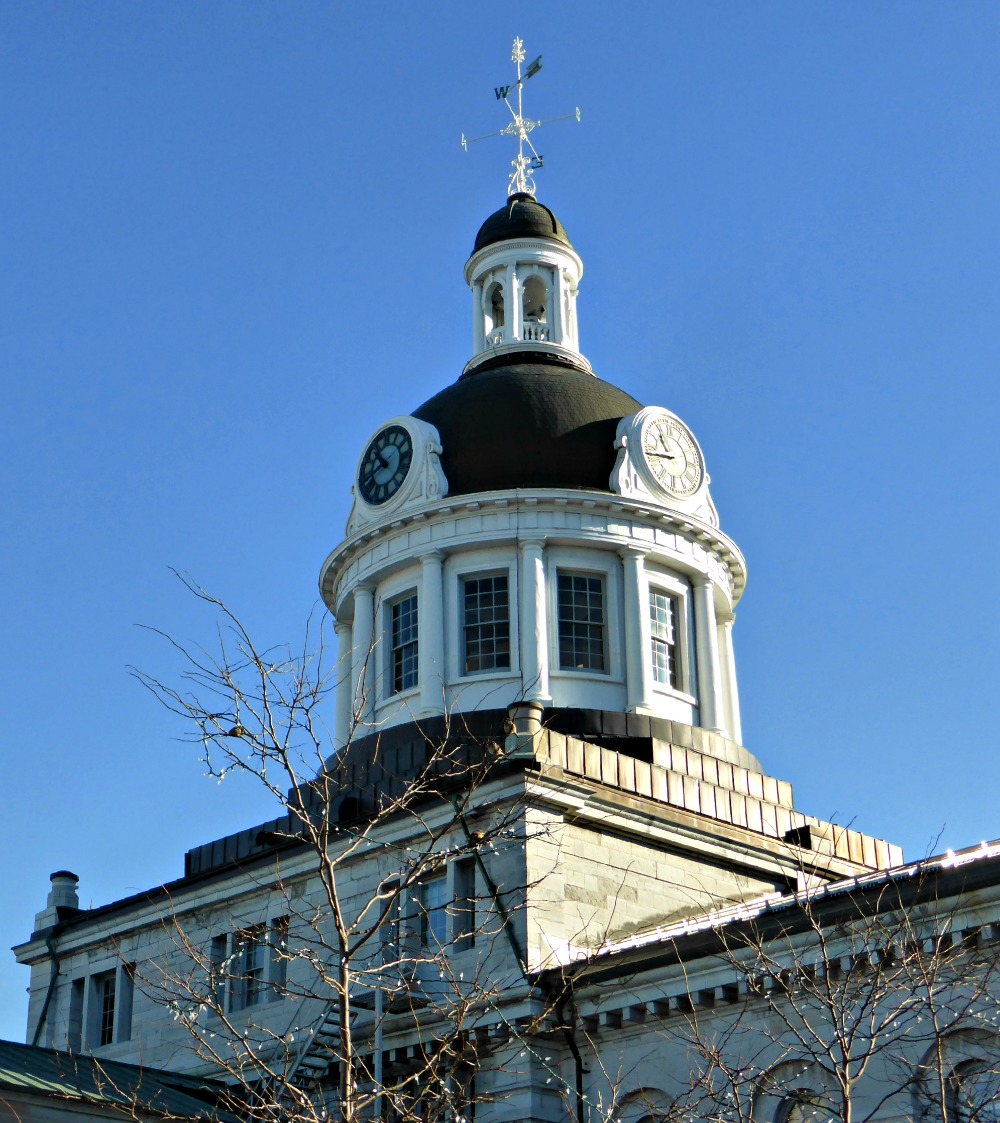
- In June 1842 a competition was announced for architects to design the building and the cost of construction was set at 10,000 pounds. George Browne’s design was chosen from 12 submissions and the building was completed in December 1844 (at the final cost in excess of 25,000 pounds. Oops! Looks like budgeting wasn’t their strength) at the time that Kingston was the capital of the Province of Canada
- The original design had a hemispherical dome with no clock faces or belfry- they were housed in a large end block in the market wing. When the market wing was destroyed by fire in 1865 the original clock was moved to the main dome.
- The first Prime Minister of Canada, Sir John A. Macdonald’s body laid in state upon his death in 1891 in what is now the Memorial Hall.
- In 1908 the cupola on top of the dome and part of the dome burned (they just did not have good luck with fires). It was rebuilt in 1909 and a new clock and bell were installed and these remain present in the dome today.
RESOURCES | PLAN YOUR TRIP TO CANADA
Some of the links in the post above are affiliate links. This means if you click on the link and purchase the item, we will receive an affiliate commission but this does not affect the price to you. Please read our full disclosure policy here.





